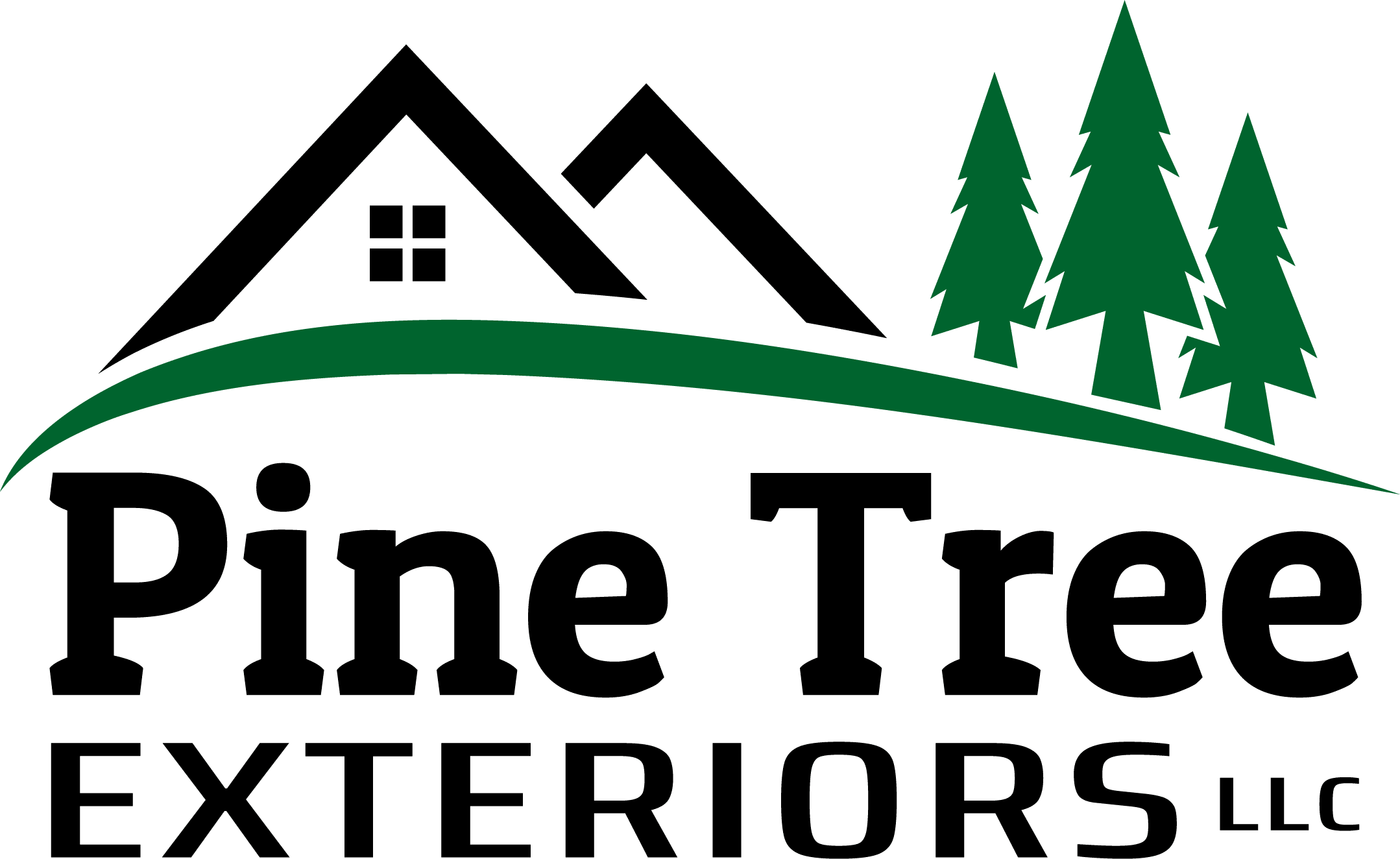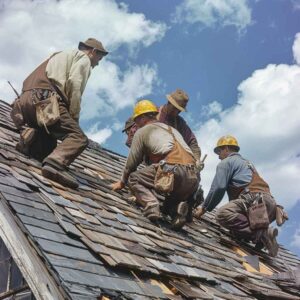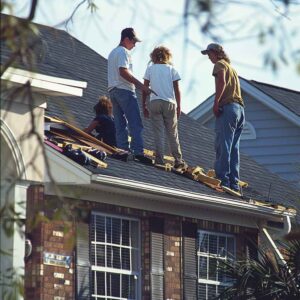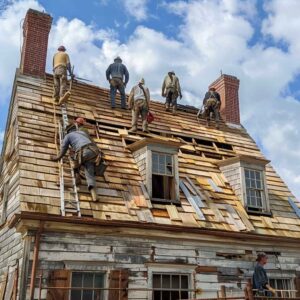Common types of roof reparations include shingle replacements for weather damage or aging, flashing and sealant repairs to prevent water intrusion, fixing leaks and water damage by replacing shingles or sealing gaps, and structural roof repairs to maintain integrity. Identifying issues promptly is essential to prevent further damage and maintain the roof’s longevity. Each type of repair serves a specific purpose in ensuring the roof’s functionality and structural soundness. Understanding these categories can help homeowners address roofing issues effectively and safeguard their property investment. More insights await on roof repair techniques’ different aspects and significance.
Common Shingle Replacements
What are the most common issues that require shingle replacements on roofs? Shingle replacements are often necessary due to various factors such as weather damage, aging, poor installation, or lack of maintenance. Weather-related issues, including wind, hail, and heavy rain, can cause shingles to crack, curl, or even blow off entirely. Over time, shingles can also deteriorate due to prolonged exposure to sunlight, leading to brittleness and breakage.
Another common reason for shingle replacements is improper installation. If shingles are not correctly installed, they may not adhere properly or be more prone to damage. Moreover, poor ventilation in the attic can cause heat and moisture to build up, accelerating shingle deterioration.
Regular maintenance is essential to prolonging the lifespan of shingles. Inspecting the roof periodically for any signs of damage, such as missing or damaged shingles, can help address issues promptly before they escalate. By addressing these common issues promptly, homeowners can ensure their roofs remain in top condition and avoid more costly repairs in the future.
Flashing and Sealant Repairs
Examining and maintaining the flashing and sealant on a regular basis is vital for ensuring the integrity and longevity of a roof. Flashing, typically made from metal or plastic, directs water away from critical areas such as chimneys, vents, and skylights. Over time, flashing can become loose or damaged, leading to water intrusion and potential leaks. Regular inspections should be conducted to check for any signs of wear or deterioration in the flashing.
Sealants are another essential component in maintaining a watertight roof. They fill gaps, joints, and seams in roofing materials to prevent water penetration. UV exposure, temperature fluctuations, and general weathering can cause sealants to degrade over time, compromising their effectiveness. Reapplying sealant as needed can help prevent water damage and extend the roof’s life.
Leak and Water Damage Fixes
A thorough assessment of the affected areas is essential to address leak and water damage issues on a roof effectively. When dealing with leaks, the first step is to identify the source of the problem. This may involve inspecting the roof for missing or damaged shingles, cracked flashing, clogged gutters, or deteriorated sealants around vents and chimneys. Once the source is pinpointed, repairs can be made accordingly.
Common fixes for roof leaks include replacing damaged shingles, resealing flashing around vents and chimneys, clearing debris from gutters, and applying waterproof sealants to vulnerable areas. It is essential to address leaks promptly to prevent further water damage, such as rotting wood, mold growth, and compromised structural integrity.
In cases where water damage has already occurred, repairs may involve replacing rotted wood, fixing interior water stains, and addressing any mold issues. It is recommended to consult with a professional roofing contractor to make sure that all leak and water damage fixes are carried out effectively and efficiently.
Structural Roof Repairs
Reinforcing load-bearing components and addressing foundational support issues are essential aspects of maintaining a roof’s structural integrity. These repairs are vital for guaranteeing a building’s safety and longevity. Common structural repairs include fixing sagging or uneven roof lines, reinforcing rafters or trusses, and addressing roof foundation issues.
One critical structural repair addresses wood rot or termite damage in the roof’s support beams. This may involve replacing damaged wood sections and treating the area to prevent future infestations. Moreover, reinforcing the connections between the roof structure and the walls of the building can help prevent structural issues during extreme weather conditions.
In cases where the roof has experienced significant damage, such as from a fallen tree or severe weather, immediate structural repairs are necessary to prevent further deterioration and potential collapse. It is vital to engage professional roofers or structural engineers to assess the extent of the damage and recommend the appropriate repairs to guarantee the roof’s structural stability.
Other Roofing Tips:





